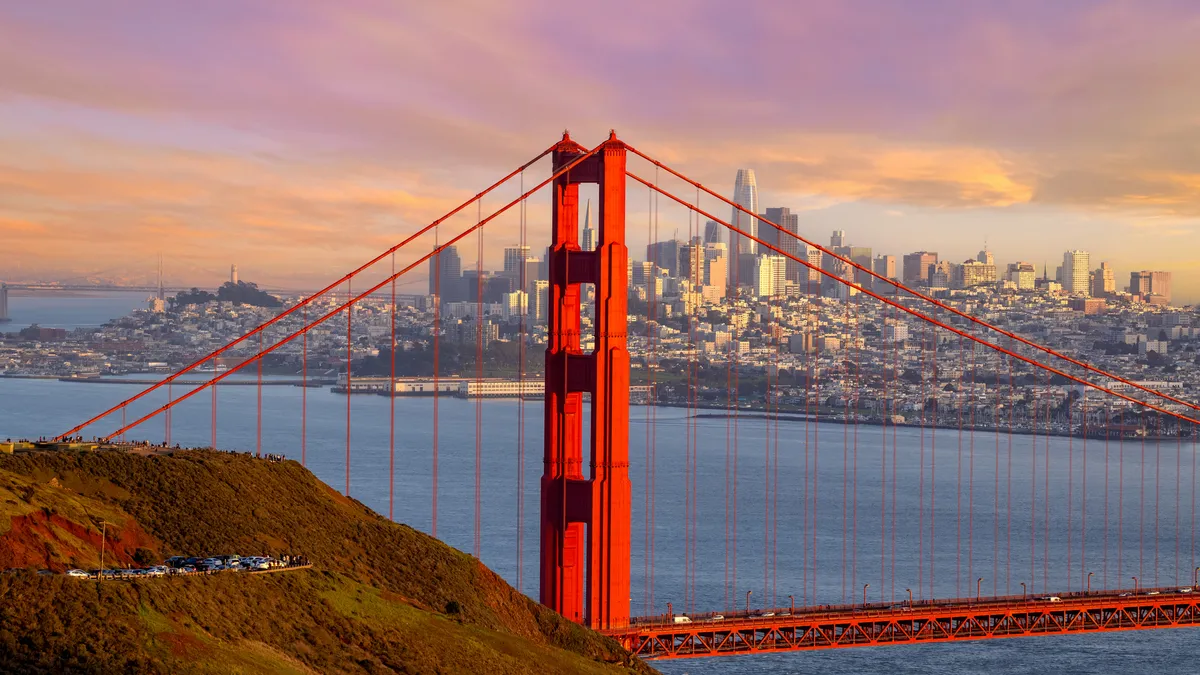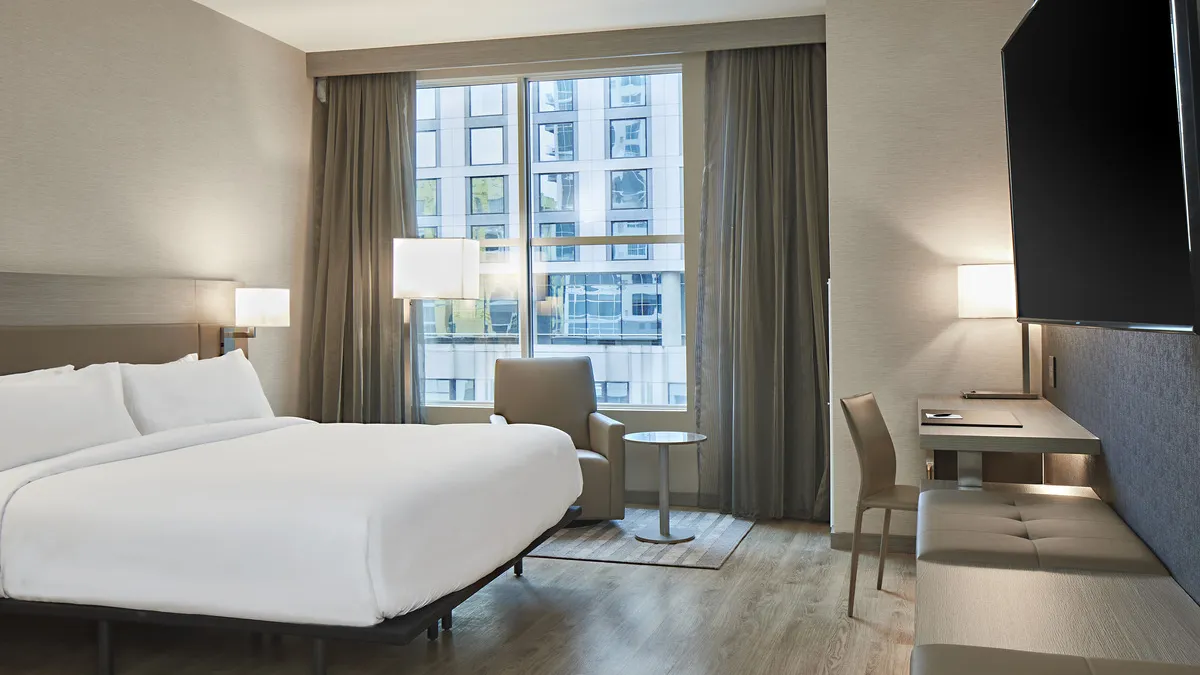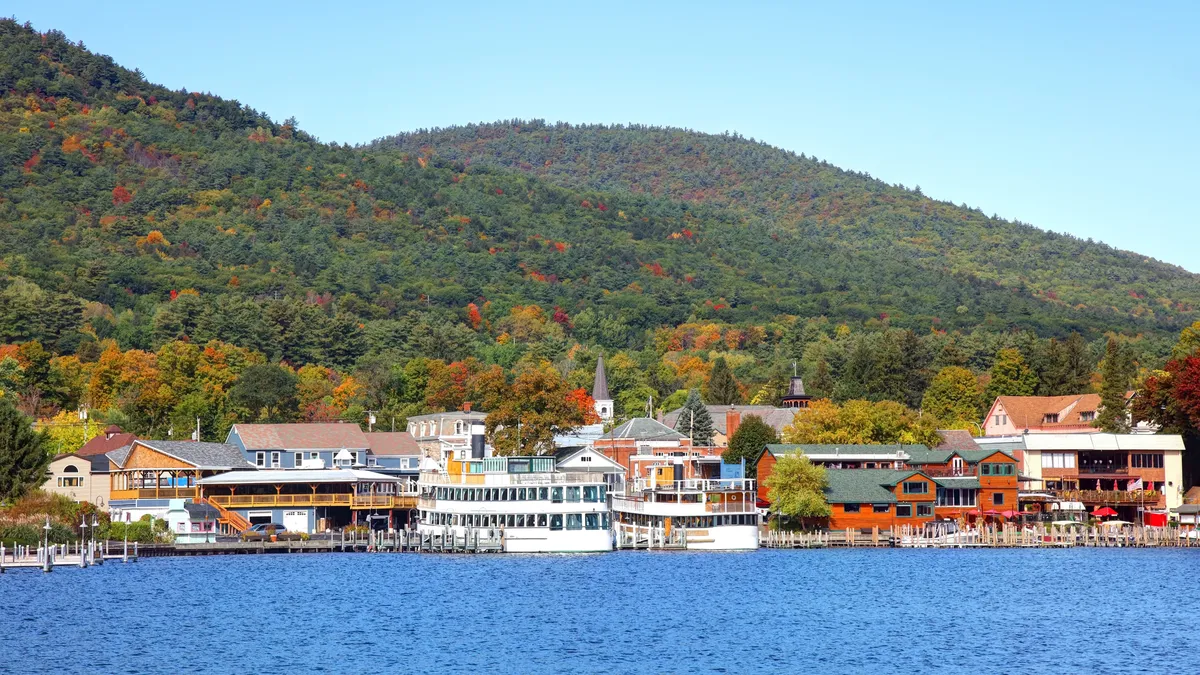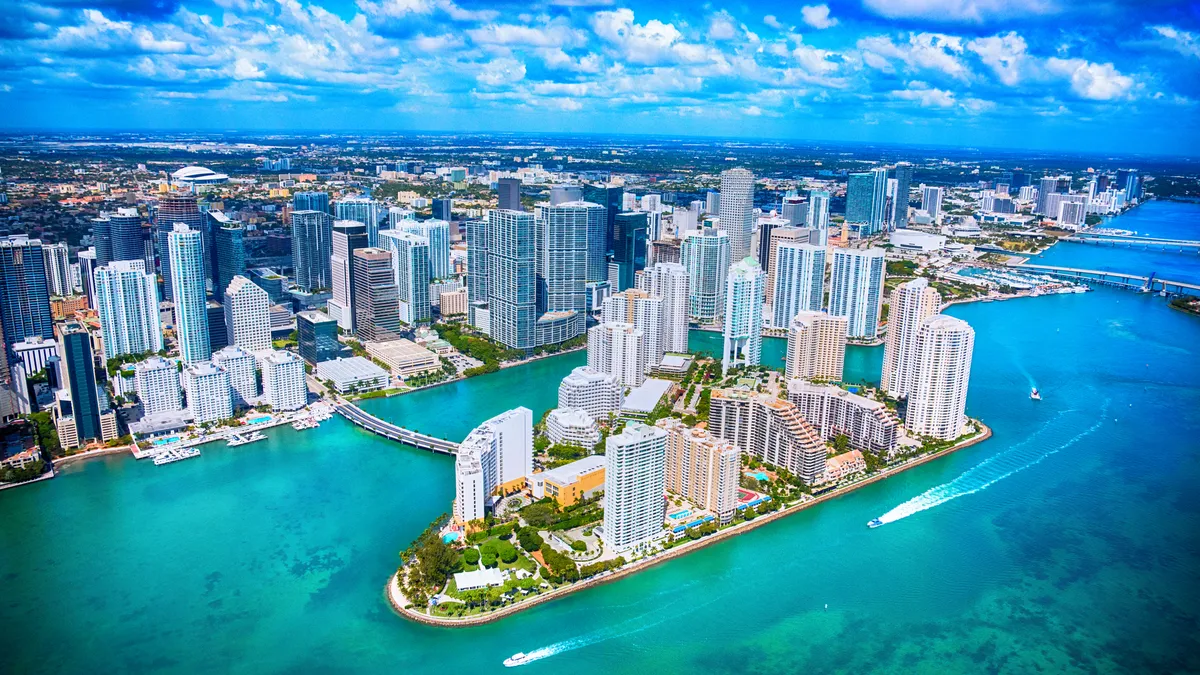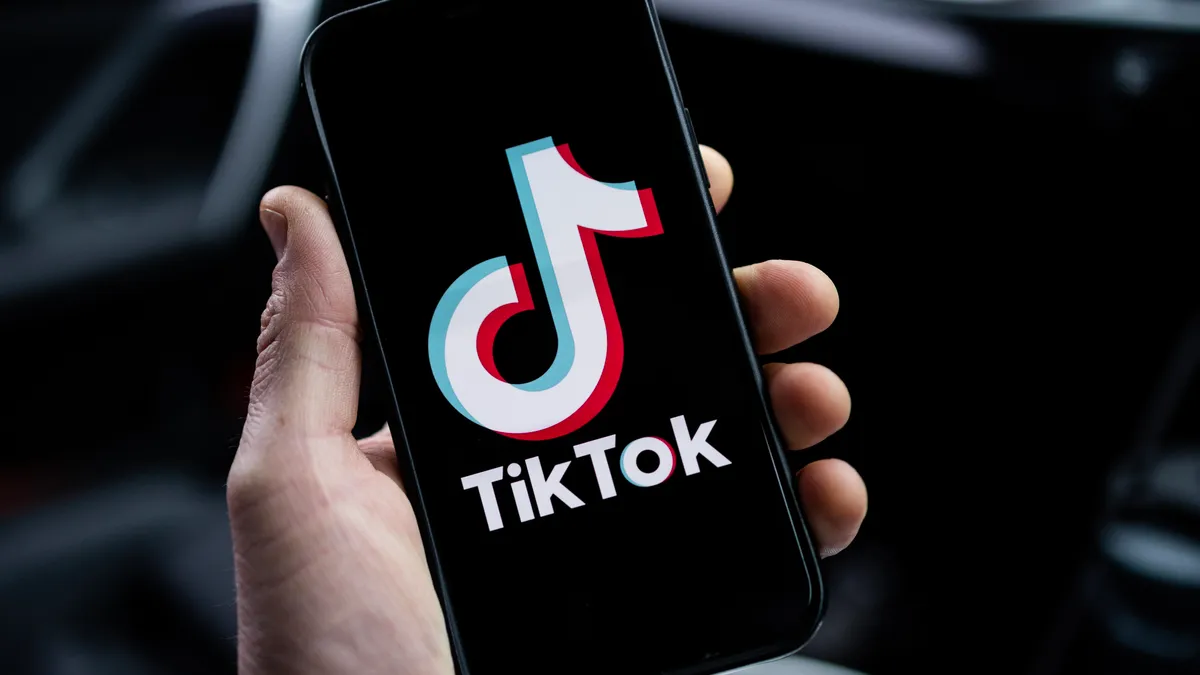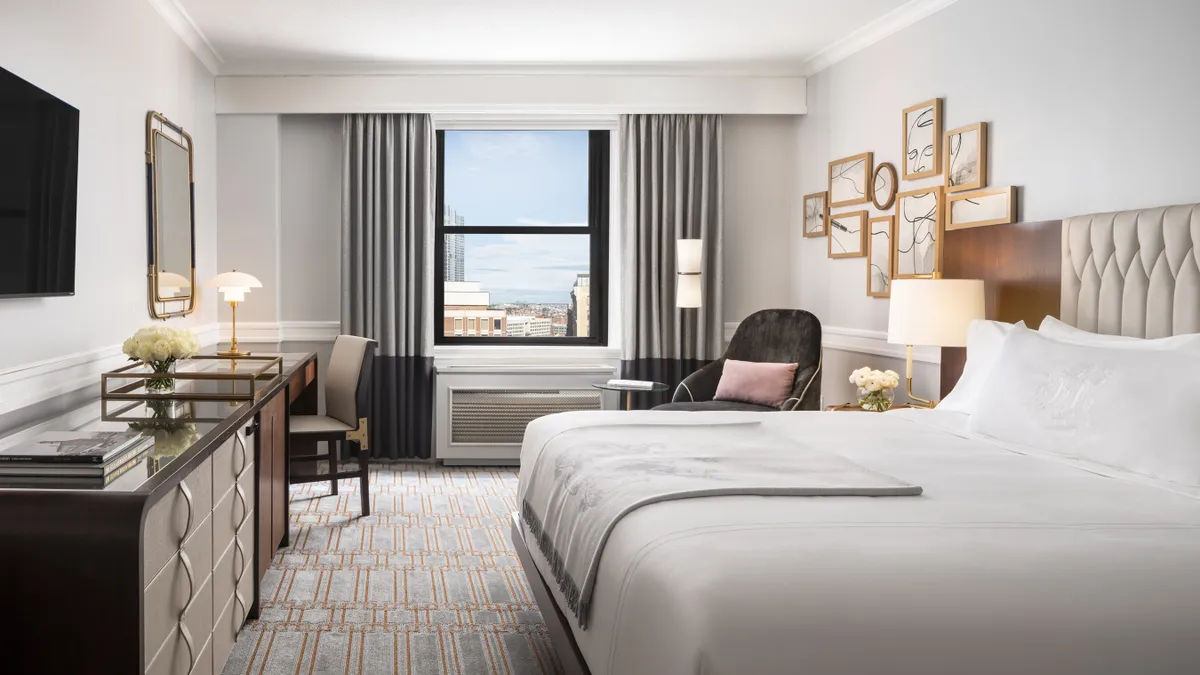San Francisco’s hotel market, the slowest to recover among U.S. markets following the COVID-19 pandemic, is on the mend this year and poised for significant growth, according to new findings from JLL released Tuesday.
The California market is experiencing rebounding RevPAR and demand driven by an improved convention calendar, resurgence of international travel and upcoming marquee events, JLL reported. San Francisco’s recovery is expected to spur hotel investment as well, bringing the city closer to speed with demand trends across other U.S. urban markets.
In a trends report obtained by Hotel Dive, JLL analyzed what’s ahead for the beleaguered market, including several “signs of a robust recovery.” President Donald Trump’s increased tariffs, though, have made market growth nationwide less certain.
Demand resurgence
Multiple factors are contributing to growing hotel demand in San Francisco, including a rise in return-to-office mandates and more conferences and transient business travel, according to JLL. Those elements, coupled with the city’s “burgeoning AI sector,” should further increase hotel demand in the year ahead.
While group demand still lags behind 2019 levels — a result of negative consumer sentiment that has hampered convention recovery — growth is anticipated in the near future, per JLL. The city’s convention demand is experiencing a “robust” rebound, with 2025 room night pace up 50% compared to 2024, according to the report.
Furthermore, major events this year and next are slated to bolster group travel to San Francisco, JLL detailed.
In November, Microsoft will host its Ignite Convention at the city’s Moscone Center, which added 220,000 square feet of meeting space and 500,000 square feet of exhibition space in 2019, positioning San Francisco “as a strong convention destination [and] promising long-term growth for the hotel market,” according to JLL.
In 2026, the city will host multiple FIFA World Cup matches, and the Super Bowl will be held in nearby Santa Clara, California. Sports tourism will be a driver of group business at hotels nationwide in 2025, hospitality pros shared with Hotel Dive earlier this year.
San Francisco’s hotel demand is also “strongly influenced by international visits,” though foreign arrivals remained below 2019 levels as of December, per the report.
Many foreign tourists will stay away from the U.S. in general and choose to travel elsewhere in the near term because of ongoing geopolitical conflict, including that caused by Trump’s tariffs, according to an April 8 ABC News report. Last week, Tourism Economics downgraded its inbound international travel forecast, now projecting a 9.4% decline in international visitor arrivals to the U.S. for 2025, led by a 20.2% decline in visitation from Canada.
A surge in AI company office leases in San Francisco (up 163% year over year in 2024) signals robust business activity for the market though. This increase is slated to attract more conferences, industry events and transient business travel, as well as drive population growth, which will in turn support strong hotel demand, JLL reported.
The company declined to provide comment on the potential impact of tariffs on the San Francisco market, noting that the situation remains fluid, and therefore it’s too early to make any long-term determinations. JLL’s report was finalized pre-Trump’s tariff announcement on April 2.
Incoming investment
Improving market fundamentals and travel demand will make San Francisco a breeding ground for hotel investment, which hit an all-time low in the market last year, according to the report.
Despite San Francisco hotel investment volume falling to a record low of $83 million in 2024, there are “multiple catalysts on the horizon expected to boost transactions activity,” including debt market clarity following recent interest rate cuts by the Federal Reserve, according to JLL.
A strong discount to replacement cost, “among the most attractive in the nation,” is another factor that will drive hotel investment in San Francisco, the report detailed.
In 2024, full-service hotels in the market were 78% cheaper to acquire than build, while select-service properties were 31% cheaper, JLL found. This cost gap tracks with other urban markets across the country, which are also seeing upward investment trends, per an August report from JLL.
“The wide gap between the cost-to-buy and the cost-to-build presents a lucrative opportunity for investors,” the August report noted.
In San Francisco, specifically, interest from private equity and foreign investors is expected to ramp up, according to JLL. Foreign capital will likely return led by European, Singaporean and South Korean investment as well as Middle Eastern Sovereign Wealth Funds targeting luxury assets.
Despite rapidly increasing labor and insurance costs, hotel investors and developers across California have not been dissuaded from expanding in the state, local hospitality pros shared with Hotel Dive last month.



